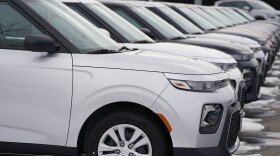Public testifiers are pushing back against the City and County of Honolulu’s proposed rate hikes and other changes for TheBus and the rail that could take effect in July 2025.
The Honolulu Department of Transportation Services is proposing a $10 increase for adult monthly passes and a $110 increase for annual passes, bringing them to $90 and $990, respectively.
The youth monthly pass would increase from $40 to $45, and the annual pass would jump from $440 to $495.
Monthly rates for seniors and Medicare HOLO card users would actually be cut in half from $20 to $10, but annual passes would jump from $45 to $50.
At a Honolulu Rate Commission meeting on Tuesday, resident Curtis Hayashi said public transportation rate hikes should be placed on tourists.
“ Instead of increasing the fares for local residents, children and adults, I encourage the Honolulu Rate Commission to increase fares for the adult 7-day pass, usually bought by tourists and visitors… with no fare increases for youth passes,” Hayashi said in his testimony. “We should encourage residents to use public transportation, and that starts with not increasing public transportation fares for residents, especially for children.”
In its presentation, DTS said a 7-day pass was currently $30 for adults, and the proposed rate was $35.
A DTS spokesperson later confirmed with HPR that a 7-day pass currently costs $35 and will not be increasing this fiscal year. However, the DTS spokesperson said the proposal had not been approved and was subject to change.
DTS also asked for a $0.25 increase on the base fare for discounted single rides, including resident seniors and Medicare card holders. Another significant fare proposal is a $0.25 surcharge on all categories of single rides paid in cash. For example, a senior citizen buying a single ride with cash would pay $1.75, up from the current $1.25.
A regular adult HOLO card fare for a single ride will remain $3, which last increased in 2022 from $2.75.

DTS Director Roger Morton said public transportation plans on eliminating cash altogether and wants to encourage the use of HOLO cards.
He said the department generated $11 million in cash revenue from buses last year, and it cost $4 million to process and handle that money. He said cash revenue from TheBus is shrinking, and at some point, the cost of processing cash will be greater than the cash revenue generated.
“The overwhelming cost of handling money… leads us to look for a goal in which we actually have a bus more like an airplane where you don't pay when you get on the plane, you've already got your fare accounted for,” Morton said.
DTS will introduce open payments next year, meaning riders will be able to pay with a credit card. Testifiers raised concerns about the public’s ability to access the bus without a cash option.
“I have reservations about going fully digital because of things going wrong with our electronics, like cyber attacks as well as equipment failing,” said Donald Sakamoto, president of Citizens for a Fair ADA Ride.
In June a cyberattack hit HOLO card readers on city buses. Sakamoto is worried that vulnerabilities with electronics could leave riders without a way to pay for bus fares if cash payments were eliminated.
DTS said its rate proposals would generate an additional $4.4 million for the city and help cover increased operation costs for TheBus and future costs once the next segment of the Skyline rail is completed.
The Honolulu Rate Commission will continue collecting public testimony on the proposed rates, and plans on making a recommendation in March 2025.






